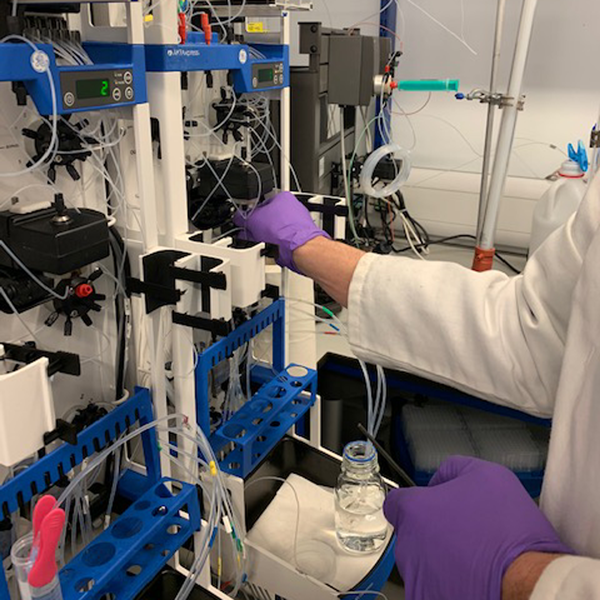You’ve selected your protein purification system, justified the capital expenditure and it’s installed and running in your lab. How can you ensure that you maximize your instrument investment and avoid the high costs associated with instrument failure?
When you’re trying to control costs, it can be a difficult choice on where to spend your budget. Instrument service costs can seem a high price to pay when systems are routinely running well and it is tempting to let service plans lapse. But, when a breakdown occurs it can often end up costing far more. It’s a gamble – outlay money on a service plan that might seem unnecessary or take a risk on high unplanned costs if the worst happens? It might save money in the short-term, but often, investing in regular AKTA preventative maintenance (PM) is more cost-effective and predictable than trying to manage the downtime, inconvenience and higher cost of breakdown repairs.
PM plans are designed to maintain optimum performance of your instrument and ensure that you get accurate and reproducible results, as well as making sure you adhere to regulatory compliance standards. Because PM visits are scheduled in advance you can organise your lab’s time and maximize the uptime of your instruments.
So, what should you look for in an instrument service partner, or what should be incorporated should you choose to carry out your own routine servicing?
What should an AKTA preventative maintenance call routinely include?
AKTA Preventative Maintenance should include a number of different tests and inspection points covering the main components of the system and replacing all parts subject to wear-and-tear during normal instrument use to maximize system uptime. “Wear” components vary between systems, but typically include pump seals, membranes for pump rinsing, o-rings, in-line filters and inlet filters.
Some of the key components that should be inspected during a PM include:
- Pump module
- Monitoring system
- Ancillary systems
- Software
Let’s look in a bit more detail at each key area for inspection.
Pump Module
The pump module is the core component of a low–pressure chromatography system. Whether in isocratic or gradient mode, the pump module is what provides a reproducible and pulse–free flow rate. Depending on the mobile phases used and the effectiveness of routine cleaning / seal washing protocols, piston seals can be damaged very quickly. This can result in visible leaks or decreases in pressure / pressure spikes as the pump is working to deliver solvent. So, it’s crucial to make sure that the system is sealed well and operates pulsation free. Generally, PMs replace all the replaceable pump components, ensuring an “as new” system.
Monitoring System
Inline detectors are used to monitor the purification process, most commonly a UV / Vis absorbance detector, because the majority of proteins absorb light at 280 nm.
The UV monitoring system comprises a UV monitor, lamp, flow cell, pH meter and conductivity cell and is set up to continuously measures the absorbance of the liquid in a UV flow cell at a set wavelength. The most common cause of noisy and insensitive UV / Vis absorbance curves is a dirty flow cell. The flow cell should be thoroughly cleaned as part of a PM service, as should the pH electrode and conductivity flow cell. Although you may routinely clean the flow path of your system and flush the flow cells after use and prior to storage, a thorough clean as part of a PM will ensure any residues and potential contaminants are removed.
Self-test and calibration procedures of the monitor should be observed to ensure it is working correctly; the lamp intensity and “on time” are checked and if the lamp is reaching the end of its lifetime, it needs to be replaced.
Ancillary systems
The ancillary systems of the AKTA FPLC that need to be checked include:
- Manual and electronic valve – switching and positioning, external / internal leakage and back pressure.
- Liquid system – inspection and cleaning of inlet and inline filters.
- Fraction collector operation.
System software and configuration
The system software needs to be checked and updated:
- Updates to the latest instrument configuration.
- Review of service error log.
- Operational check of computer and software.
You may also find that if you’re running an older version of Windows OS on the PC controlling your AKTA, you start to hit associated networking and upgrade problems with your system. Upgrading Windows could be a good idea to extend the life of your older AKTA system.
At the end of a PM, you should be left with an “as new” system, confident that for another year, you have a productive and efficient system. With all perishable parts such as seals and pistons replaced, you can be sure of leak-free operation with a clean fluid path and contaminant-free monitoring system.
It’s a lot to take on board as a self-service option, but if you feel confident to undertake your own routine servicing, parts and spares for most systems are readily available. Although older, discontinued systems may no longer be supported by the manufacturer, so you may need to search out suitable and compatible generic replacement parts.
With the high costs associated with upgrading lab instrumentation to the next generation protein purification systems, it pays to keep your incumbent systems running as efficiently and as effectively as possible for as long as possible. Investing in regular preventative maintenance can help you defer expensive upgrades and time-consuming revalidation of methods. Whether you choose to service your own systems, buy an OEM’s service contract, or outsource to a third–party service provider, prevention is surely always better than cure!

